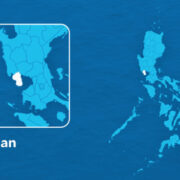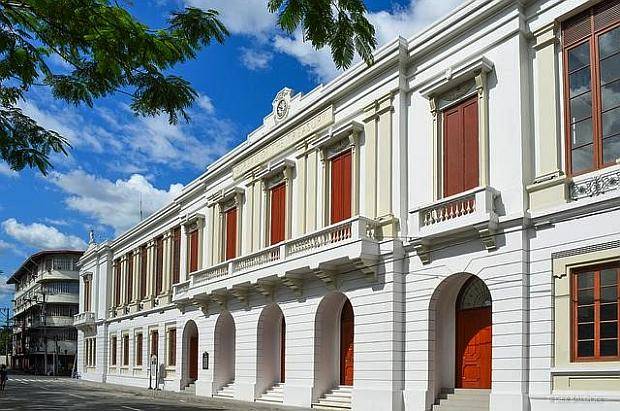Why the next market shock could hit more PSE firms

In times of economic uncertainty, one of the most important questions investors and business leaders must ask is: how stable is a company’s financial foundation? Strong earnings can offer comfort, and rapid growth often captures attention, but neither guarantees long-term viability. Beneath the surface, balance sheet strength and capital efficiency often tell a more complete story.
To see that full picture, we need tools that combine different signals—not just profits or debt, but how a company holds up across several fronts. One of the most reliable is the Altman Z-score, a model that brings together key financial ratios to assess how likely a firm is to face distress.
The Altman Z-score doesn’t rely on market sentiment or short-term earnings boosts. It measures how well a company converts capital into returns while maintaining financial stability.
Over the past five weeks, we covered each of the five components that make up the Z-score: working capital to total assets (A), retained earnings to total assets (B), Ebit to total assets (C), market value of equity to total liabilities (D) and sales to total assets (E). Each ratio reflects a specific aspect of financial health. The Z-score combines them using the formula Z = 1.2A + 1.4B + 3.3C + 0.6D + 1.0E to assess the long-term strength of a company.
According to the Altman model, companies with Z-scores above 2.99 fall within the safe zone, while those scoring below 1.81 face a high risk of financial distress. The lower the Z-score, the greater the likelihood of bankruptcy.
If we apply the Altman Z-score to companies listed on the Philippine Stock Exchange (PSE), we find that the median Z-score has dropped from 2.73 in 2019 to 1.88 today. This decline suggests that the overall financial resilience of PSE firms has weakened, with more companies nearing distress territory.
In 2019, before the pandemic and the rate-hike cycle, 46 percent of companies were classified as “safe,” while about 35 percent were in distress. Today, the share of distressed companies has surged to nearly 48 percent, while only 30 percent remain in the safe zone.
At the industry level, real estate was already under pressure in 2019—about 50 percent of firms were in the distress zone, which reflects the sector’s capital-heavy structure and delayed revenue cycles. Today, that figure rose to 55.6 percent. Although the inclusion of REITs helped soften the impact, the broader trend still pointed to growing financial stress.
What changed?
Interest rates stayed elevated. Project absorption slowed. And more importantly, capital recycling weakened. Real estate depends on steady cash flow and timely project turnover. When that weakens, Z-scores follow.
Retail appeared healthy in 2019, with 71 percent of companies in the safe zone and only 14 percent in distress. Today, the share of safe firms fell to 57 percent, while distress held steady.
But with more companies slipping into the gray zone, the shift signals weakening fundamentals. Even with a rebound in consumer demand, some retailers struggle to regain operational efficiency. Margins alone can’t sustain a business when asset productivity begins to erode.
Telecom, mining and utility-related firms, despite their strategic roles in the economy, also showed financial stress. In 2019, 43.3 percent of companies in this group were already in distress. That number rose to 45.5 percent today.
At the same time, the share of safe firms fell from 36.7 percent to just 27.3 percent. While the sector continued to invest heavily, the returns have not kept pace.
Food and beverage retail presents a mixed picture. In 2019, 66.7 percent of firms in this group were considered financially safe, and none were in distress. Today, only 50 percent remained safe, while 25 percent moved into distress. This trend indicates rising pressure even in traditionally stable segments.
While some companies continue to show financial strength, others are struggling to keep up. Cost inflation, changing consumer habits and intense competition have begun to expose underlying weaknesses.
The common thread across all sectors is this: over the past five years, capital efficiency has declined. Asset bases expanded, but revenue failed to keep up. Leverage rose, and retained earnings thinned. These are exactly the weaknesses the Z-score captures. And while some companies still report positive earnings, their fundamentals tell a different story.
What does this mean for investors? It means the risk embedded in today’s stock prices is higher than it was five years ago. In a low-rate environment, these issues could be masked. But in a world of high interest rates, capital discipline moves back to the center of the conversation.
The Z-score helps us spot those risks—especially when they haven’t yet appeared in the headlines. Right now, it points to rising fragility across the PSE. In a market like this, perhaps the smarter question is not “what’s growing?” but “which company is strong enough to survive the next market shock?” Because when credit tightens and demand slows, only the financially resilient endure.





















